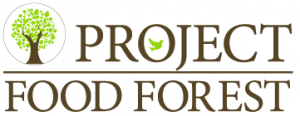Americorps Community Forestry Corps position: Apply by September 9!
Apply now: https://www.servetogrow.org/forestry
Position details specific to Project Food Forest position:
A Community Forestry Corps member will increase our capacity to provide outreach and education throughout Rock County, both on site at our Minnesota Project Food Forest location, which includes the Prairie Ally public food forest and productive perennials riparian project, and through developing relationships with local schools to create videos and/or live digital lessons.
Create interpretive yard signs related to trees to be placed on public property throughout towns in Rock County.
Provide additional maintenance and outreach at Prairie Ally the remainder of this fall, and next spring and summer.
Lead private scheduled tours at the Project Food Forest/Prairie Ally site for individual families in order to provide a sensory educational experience while being able to stay as safe as possible with COVID.
Plan and promote a productive perennial field day to include other partners to be held in summer 2021 at Prairie Ally.
Plan and coordinate planting at Rock County Opportunities, a new public food forest site in Luverne to be installed in spring 2021. Conduct maintenance, recruit volunteers, and create plan for long term success of the site.
Increase volunteer recruitment from demographics we have not yet reached, working toward enhancing overall health equity and inclusion throughout Rock County.
Collaborate with City of Luverne parks department.
During the winter months, the Corps member will spend part of their time networking, planning, and creating content. As a fairly new organization, we are just beginning to recognize the broader ways in which we can serve. We have been having more folks throughout the country find the Project Food Forest website and reach out to us, inquiring who we know in their area who does permaculture and agroforestry work. This is an area where a Corps member could have an impact beyond Rock County. By researching and connecting with other permaculture related companies, non-profits, and school and public food forests throughout the country, we can bridge current gaps; building networks by creating a list of resources for our website as well as adding to existing databases for public food forests such as communityfoodforests.com.
More about us:
The work of Project Food Forest and our Minnesota office, on which host site Prairie Ally Outdoor Center is located, provides a unique twist on preserving and increasing tree canopy. Prairie Ally includes about an acre of public food forest. 5/8 of the acre is fully free and open to the public daily, dawn to dusk, and the other portion, which is a productive perennial riparian buffer demonstration site installed by University of Minnesota Extension Regional Sustainable Development Partnership, will be accessible for special events. The property also includes 4 acres of prairie and wetland restoration, and our next project is to acquire .4 acres of adjoining land for annual gardens and barn restoration to be used as education, storage, and grow space.
Phase 1 of the Prairie Ally food forest was installed in 2018, and phase 2 of installation is underway this season with additional planting and site improvements.
Project Food Forest was founded in Sioux Falls, SD in 2016 with the mission to empower people to feed themselves through agroforestry, edible landscaping, and education. Designed to operate as an ecosystem, a food forest focuses on trees, shrubs, vines, perennials, and self-seeding annuals that, once established, will need only a little help from people to be very productive. Our goal is to encourage, empower, and equip people to plant and care for edible plants all over. We to do this by planting public food forests, designing low-maintenance edible landscapes for clients, and educating through classes throughout the region.
Project Food Forest is rooted in these values when working with public food forests:
Reliability/Resilience — We use plants that, once established in a healthy ecosystem, reliably return year after year with minimal input. We can make ourselves more resilient in the face of impending threats with local, sustainable food systems.
Community and Knowledge — We involve the community in the building, maintaining, harvesting, and preserving of the food forests and their yields to teach people how to sustainably grow food, and to simply remind them that they can, given the opportunity.
Fairness — We make the food available to anyone at any time, as long as the food is ready for harvest, without needing to provide proof of income. If someone is hungry, curious, or just wants to enjoy fresh, local, healthy food, he or she is welcome to harvest.
Sustainability — We set an example of sustainable food production. We can produce nutritious food, provide wildlife habitat, build soil, sequester carbon, and provide areas of serene beauty.
Diversity — We build diversity of plants and animals while embracing the diversity of people in our city.
Responsibility — We value the effort and dedication it takes to be responsible for ourselves and for the environment.
Respect — We respect each other, respect the land, and respect the plants and animals in the forest gardens.
Benefits to the environment that food forests bring, and that we believe are in line with the Community Forestry Corps goals:
Ecological improvement
The amount of ecological restoration accomplished by a single food forest depends on the size of a food forest, but generally speaking, an agroforestry system offers many ecological benefits.
Climate change/Carbon sequestration
Reduced tilling and keeping all plant matter on site (chop-and-drop mulching) sequester carbon. Plants pull carbon from the atmosphere which they convert into plant tissues. Keeping the plant tissues in the soil keeps the majority of the carbon in the soil.
Trees take up carbon from the atmosphere and release oxygen, acting as effective lungs for the city.
Large numbers of trees are shown to reduce city temperatures (city heat) by several degrees.
Large numbers of trees also affect the climate reducing winds with their size and increasing humidity and causing rain through evapotranspiration.
Water quality
Perennial root systems stabilize soil, reducing sediment in local rivers.
Food forests aim to minimize and ideally eliminate fertilizers or pesticides, thus eliminating this source of contamination of local water from this food source.
Any food forests planted near water will act as a buffer to reduce the amount of urban sources of water pollution that reach the water such as oil, de-icing chemicals, and pet waste.
Localization of food system
Community gardens are shown to serve as a center for social interaction and civic engagement.
Nutrient density of food is at its highest directly after harvesting.
Connection of people to their food supply can give people more respect for the ecosystems that support them.
Reduction of transportation of food reduces carbon emissions.
Eating foods that are in season (eating the foods that are currently harvestable) ensures a greater variety in the diet, and thus a healthier diet.
We are providing food not only for today, but providing in person and online visitors with the inspiration and education to get more involved in planting and caring for edible perennials on site, in their own backyard, and in other private or public spaces wherever it is possible. We aim to inspire the next generation of farmers and land stewards; whether by necessity, as a hobby, or as a career. Food for today. Food for the future.
Extreme care will be taken to ensure health and safety of a Community Forestry Corps member and the community throughout the duration of their service.



